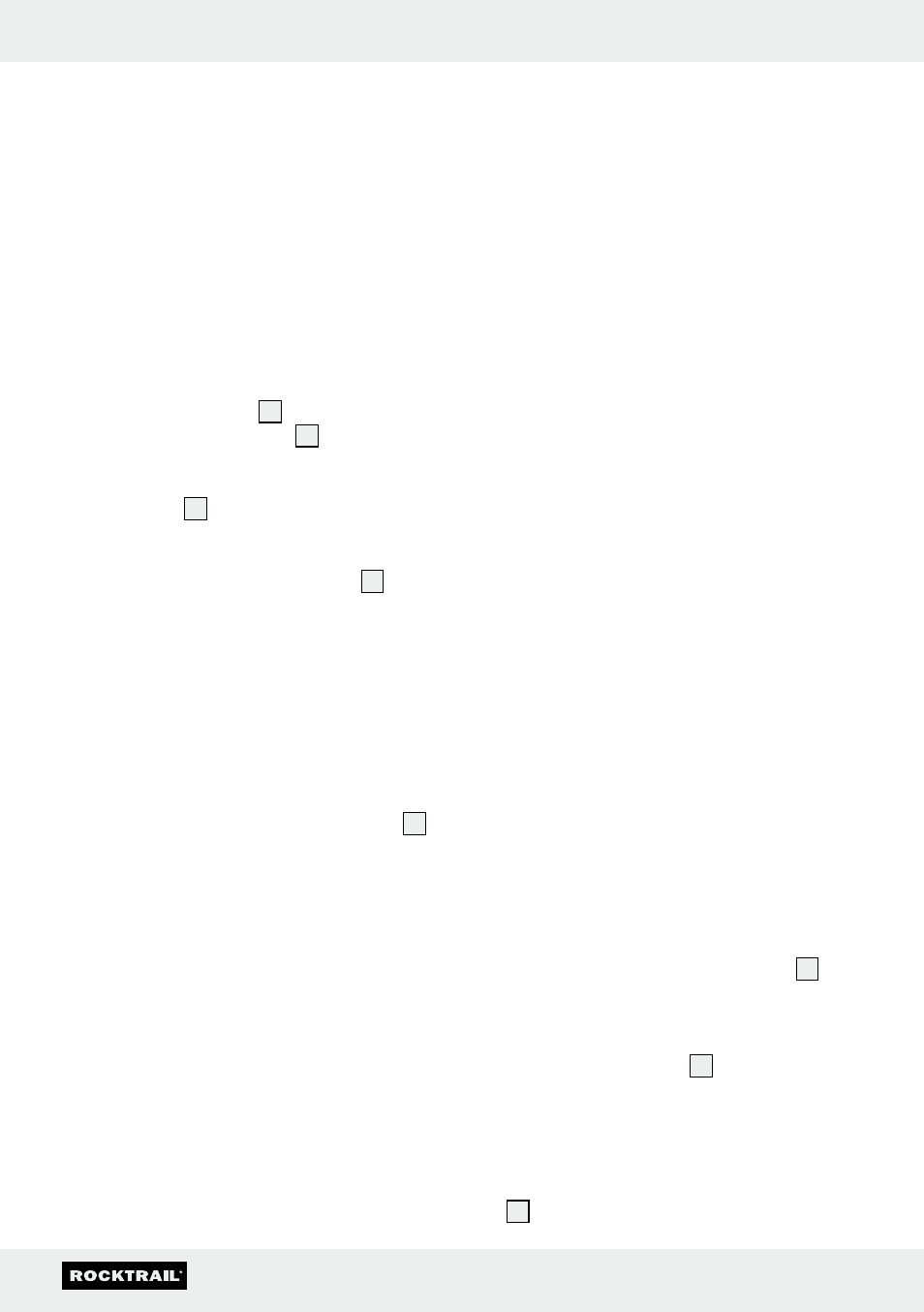Introduction / safety advice safety advice – Rocktrail 4-Person Tent Z29743-BS User Manual
Page 5

5
GB/IE
Introduction / Safety advice
Safety advice
m CAUTIOn! Do not leave children unattended.
The product is not a climbing frame or toy.
Make sure that nobody climbs or leans on the
product, particularly children. The product
could become imbalanced and tip up. This
may result in injury and/or damage.
m CAUTIOn! rISK OF InJUrY! Never under
any circumstances assemble the product in a
strong wind.
J
Select a piece of land that is as flat and firm as
possible to erect your tent.
J
Sandy surfaces reduce the stability of the tent.
Please ensure that the surface provides a firm
hold for the tent pegs
8
.
J
Never knock the tent pegs
8
into the ground
with force! If necessary, the guy ropes should
only be extended with the help of a loop and
the tent peg
8
positioned in a different location.
J
The intactness of all connection points and the
guy ropes should be checked regularly, as
should the firmness of the tent pegs
8
in the
ground.
J
If the tent is erected in the wrong order, this
may cause damage to the tent. All liability is
excluded in such cases.
m CAUTIOn! DAngEr OF POISOnIng
AnD DAMAgE TO PrOPErTY! Do not
light any fires within the product and keep it
away from sources of heat.
J
Precautionary measures with respect to fires are
stated on a label sewn into the inner tent
2
.
You are advised not to remove this label.
J
We strongly recommend that you do not
remove the sewn-in labels.
J
You should also familiarise yourself with the
local fire protection regulations (e.g. camping
site, tent pitch).
J
Keep the exit free! Do not block the exit with
objects.
Fire precautions
Camp safely. Follow these common-
sense rules:
J
Do not place hot appliances near the walls,
roof or curtains
J
Always observe the safety instructions for these
appliances
J
Never allow children to play near hot
appliances
J
Keep exits clear
J
Make sure you know the fire precaution
arrangements on the site
Take note of the effects of the weather
and climate
J
When selecting the location to put up your
tent, you should always consider the local situ-
ation and how this might change. Will the ter-
rain turn into a lake if it rains? Please take into
account any rising rivers and incoming tides.
J
Protect the product against strong wind and
storms. Place the product in a location that is
protected from the wind if possible.
J
If a strong wind is forecast, replace the normal
tent pegs with special storm pegs. You can find
information about meaningful supplementary
products at specialist shops.
J
The tent should be taken down before heavy
snowfall or stormy weather.
J
Remove any snow directly from the product.
Otherwise the product may collapse under the
weight.
J
Ensure that the tent is not too taut when it is
erected, otherwise it may not be able to adapt
to changing weather conditions and might be
damaged.
J
Zips are wearing parts and do not fall under
the guarantee conditions.
J
Condensation can form in all synthetic tents;
you should therefore air the tent as frequently
as possible in order to counteract this.
J
The polyester material of the outer tent
1
con-
sists of water-repellent material.
J
It is possible that during the first rainfall the tent
will not be completely watertight. However, the
threads of the outer tent
1
will contract when
exposed to water so that after a short time the
tent will become watertight.
J
When exposed to moisture and rain, tent fab-
rics expand to varying degrees and make it
necessary to adapt the length of the guy ropes
7
. If the material becomes taut again while
